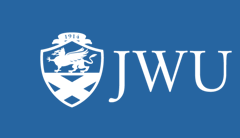Document Type
Article
Abstract
Techniques for infusing critical thinking instruction into content while teaching specific subjects have been discussed in the educational literature pertaining to critical thinking and instruction. The purpose of this study was to determine if infusing a brief critical thinking lesson related to course content into a culinary arts laboratory course which provides a setting for career oriented active learning would lead to gains in critical thinking ability.
The general structure of the methodology was adapted from work completed by Rose (1997). An experimental, pretest-posttest control group design was employed (Campbell & Stanley, 1963) to determine treatment effects on the variables identified. Participants were randomly selected and consisted of an experimental group of 14 students and a control group of 13 students.
A culinary arts laboratory course was chosen for the study. The course operated nine consecutive six-hour days for a total of 54 hours of instruction. Experimental group participants received a 45-minute lesson on critical thinking during the second hour of the first class day, after the pretest was administered. Control group participants received normal instruction and did not receive the infused critical thinking lesson. At the end of the class during the 54th hour both groups completed the posttest. All participants' critical thinking skills were assesses using the California Critical Thinking Skills Test (Facione, 1991), forms A (pretest) and Form B (post test).
Multiple Analyses of Variance (repeated measures) were conducted on overall CCTST scores as well as scores on the sub scale items of analysis, evaluation and inference to determine whether there were significant differences on the dependant variable (i.e., post-test CCTST B scores) according to the independent variable of method of instruction. An alpha level of p. <.05 was employed to assist in preventing a Type I error. Analysis of overall scores and the scores on the subscale items of analysis, evaluation and inference yielded no significant findings. Further research on infusing critical thinking instruction into active learning environments is suggested along with broader research in formulating more authentic measures of critical thinking ability.
Repository Citation
Griffin, James E. Jr, "Analyzing Critical Thinking Instruction For Post Secondary Laboratory Students" (2002). University Office Publications. 1.
https://scholarsarchive.jwu.edu/univ_office/1


Comments
The dissertation abstract can also be viewed through this link:
http://search.proquest.com/docview/304799451?accountid=1363
Please contact the author for full-text access.